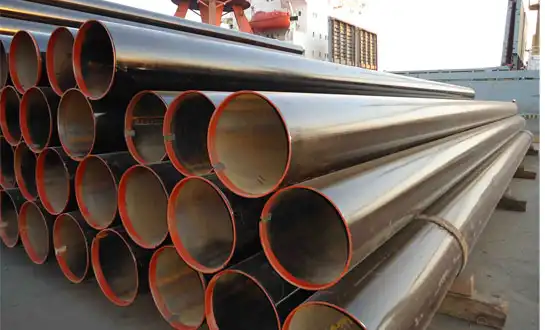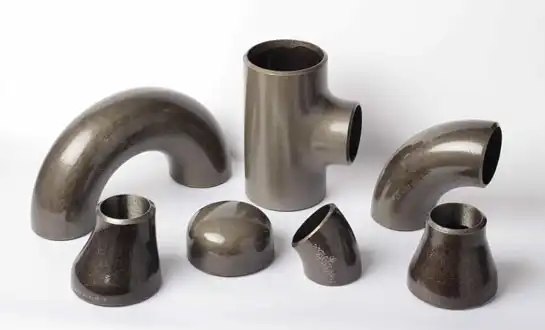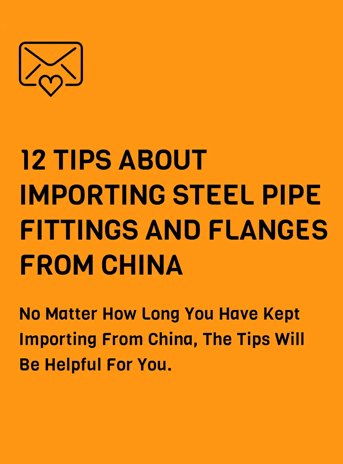ASME B16.9 vs EN 10253: How to Choose the Right Butt-Weld Fitting Standard for Your Project
Selecting the appropriate standard for butt weld fittings is crucial for project success, as it directly impacts compatibility, performance, and regulatory compliance. The choice between ASME B16.9 and EN 10253 standards depends on various factors including geographical location, application requirements, and system specifications. ASME B16.9, widely adopted in North American markets, provides comprehensive guidelines for factory-made wrought steel butt weld fittings, while EN 10253 serves as the European standard for butt welding fittings made from stainless and heat-resisting steels. Understanding the fundamental differences between these standards enables engineers and project managers to make informed decisions that ensure optimal system performance and long-term reliability.
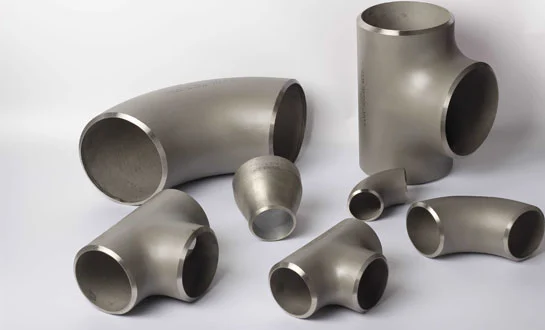
Understanding ASME B16.9 Standard Requirements
Dimensional Specifications and Tolerances
ASME B16.9 establishes precise dimensional requirements for butt weld fittings, covering elbows, tees, reducers, and caps used in pressure piping systems. The standard specifies center-to-end dimensions, wall thickness calculations, and angular tolerances that ensure proper fit-up during installation. These dimensional specifications are particularly important for butt weld fittings as they must align perfectly with connecting pipes to achieve full penetration welds. The standard also addresses manufacturing tolerances, which typically allow for variations of ±1.6mm in center-to-end dimensions for smaller sizes, ensuring consistency across different manufacturers while maintaining interchangeability.
Material Requirements and Chemical Composition
The ASME B16.9 standard encompasses a wide range of materials suitable for various industrial applications, including carbon steel, alloy steel, and stainless steel grades. Each material group has specific chemical composition requirements and mechanical properties that must be verified through material test certificates. For butt weld fittings manufactured under this standard, materials must demonstrate adequate weldability, corrosion resistance, and mechanical strength appropriate for the intended service conditions. The standard references ASTM specifications for base materials, ensuring that fittings meet the same quality standards as the connecting piping systems.
Pressure-Temperature Ratings and Applications
ASME B16.9 butt weld fittings are designed to handle the same pressure-temperature ratings as the connecting pipe, making them suitable for high-pressure and high-temperature applications commonly found in petrochemical, power generation, and process industries. The standard requires that fittings maintain structural integrity under design conditions without additional safety factors beyond those inherent in the pipe design. This approach ensures that butt weld fittings do not become the limiting factor in system design, allowing engineers to utilize the full capacity of the piping system while maintaining safety margins established by the applicable piping code.
Exploring EN 10253 European Standard Features
Geometric Design and Manufacturing Parameters
EN 10253 defines specific geometric requirements for butt weld fittings used in European installations, with particular emphasis on stainless steel and heat-resisting steel applications. The standard establishes manufacturing parameters that differ from ASME B16.9 in several key areas, including wall thickness calculations, bend radius specifications, and surface finish requirements. European butt weld fittings manufactured to EN 10253 often feature slightly different dimensional characteristics, particularly in terms of center-to-end dimensions and angular specifications, which must be considered when specifying fittings for international projects or when interfacing with equipment manufactured to different standards.
Quality Control and Testing Protocols
The EN 10253 standard incorporates comprehensive quality control measures that include mandatory testing procedures for butt weld fittings throughout the manufacturing process. These protocols encompass dimensional verification, material property testing, and non-destructive examination requirements that ensure product reliability and consistency. The standard requires manufacturers to maintain detailed quality records and implement statistical process control methods to monitor production quality. For butt weld fittings, particular attention is given to weld preparation surfaces, ensuring that beveling angles and surface conditions meet specifications that facilitate proper welding procedures during installation.
European Regulatory Compliance and Certification
EN 10253 butt weld fittings must comply with European regulations including the Pressure Equipment Directive (PED) and CE marking requirements where applicable. This compliance framework ensures that fittings meet essential safety requirements and can be legally installed in European Union member countries. The standard also incorporates environmental considerations and material traceability requirements that align with European sustainability initiatives. Manufacturers producing butt weld fittings to EN 10253 must demonstrate compliance through third-party certification bodies and maintain documentation that supports product conformity throughout the supply chain.
Key Selection Criteria for Your Specific Project
Geographic and Regulatory Considerations
Project location significantly influences the choice between ASME B16.9 and EN 10253 standards for butt weld fittings. North American projects typically require ASME B16.9 compliance to meet local codes and regulations, while European installations favor EN 10253 specifications. However, global projects may require consideration of both standards, particularly when equipment from different regions is integrated into a single system. Engineers must evaluate local inspection requirements, approved manufacturer lists, and regulatory acceptance when selecting butt weld fittings standards. Additionally, consideration should be given to future maintenance and replacement part availability, as standardization can significantly impact long-term operational costs.
Technical Performance and Application Suitability
The specific application requirements play a crucial role in determining the most appropriate standard for butt weld fittings selection. ASME B16.9 fittings are often preferred for high-pressure hydrocarbon processing applications due to their robust design approach and extensive industry experience base. EN 10253 fittings may be more suitable for applications requiring specific stainless steel grades or where European manufacturing expertise provides advantages. Engineers should evaluate factors such as operating temperature ranges, corrosion resistance requirements, and mechanical stress conditions when comparing standards. The choice of standard can also influence welding procedures, inspection methods, and overall system integration approaches.
Economic and Supply Chain Factors
Cost considerations and supply chain logistics significantly impact the practical selection of butt weld fittings standards for project implementation. ASME B16.9 fittings may offer cost advantages in regions with established North American supply networks, while EN 10253 fittings might be more economical in European markets. Project schedules must account for manufacturing lead times, shipping logistics, and customs procedures when sourcing fittings from different geographic regions. Additionally, the availability of certified welders familiar with specific standards and the cost of required inspection services should be factored into the overall economic evaluation of butt weld fittings procurement strategies.
Conclusion
The selection between ASME B16.9 and EN 10253 standards for butt weld fittings requires careful evaluation of project-specific requirements, regulatory compliance needs, and practical implementation considerations. Both standards provide robust frameworks for ensuring fitting quality and performance, but their application depends on geographic location, technical requirements, and economic factors. Successful project execution demands thorough understanding of dimensional differences, material specifications, and quality requirements inherent in each standard to ensure optimal system integration and long-term reliability.
HEBEI RAYOUNG PIPELINE: Your Trusted Butt Weld Fittings Manufacturer
At HEBEI RAYOUNG PIPELINE TECHNOLOGY CO., LTD., we excel in manufacturing premium butt weld fittings that meet both ASME B16.9 and EN 10253 standards, ensuring global project compatibility and superior performance. Our comprehensive product range includes steel elbows, reducers, and flanges manufactured with ISO 9001:2015 certified quality systems and backed by GOST-R and SGS certifications for international compliance. As leading pipes and fittings manufacturers, we combine innovative manufacturing techniques with rigorous quality control to deliver dependable solutions for residential, commercial, and industrial applications worldwide. Contact us today at info@hb-steel.com to discuss your specific butt weld fittings requirements and discover how our expertise can enhance your project success.
References
1. American Society of Mechanical Engineers. "ASME B16.9 Factory-Made Wrought Buttwelding Fittings." ASME International, 2018.
2. European Committee for Standardization. "EN 10253-2 Butt-welding pipe fittings - Part 2: Wrought austenitic and austenitic-ferritic stainless steels with specific inspection requirements." CEN, 2017.
3. Miller, Robert K. "Piping Design and Engineering Handbook." Marcel Dekker Publications, 2019.
4. Thompson, James A. "Welding Standards and Specifications for Industrial Applications." Industrial Press Inc., 2020.
5. European Commission. "Pressure Equipment Directive 2014/68/EU Implementation Guidelines." Publications Office of the European Union, 2018.
6. Singh, Rajesh K. "Materials Selection for High-Temperature Piping Systems." McGraw-Hill Professional, 2021.

Need a quote? Want to see samples? Just say hello. We’re friendly. We’re fast. And we’re ready when you are.
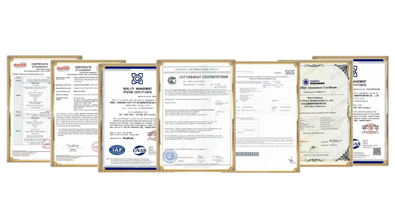
Welcome to RAYOUNG – Strong Pipes, Stronger Promise
